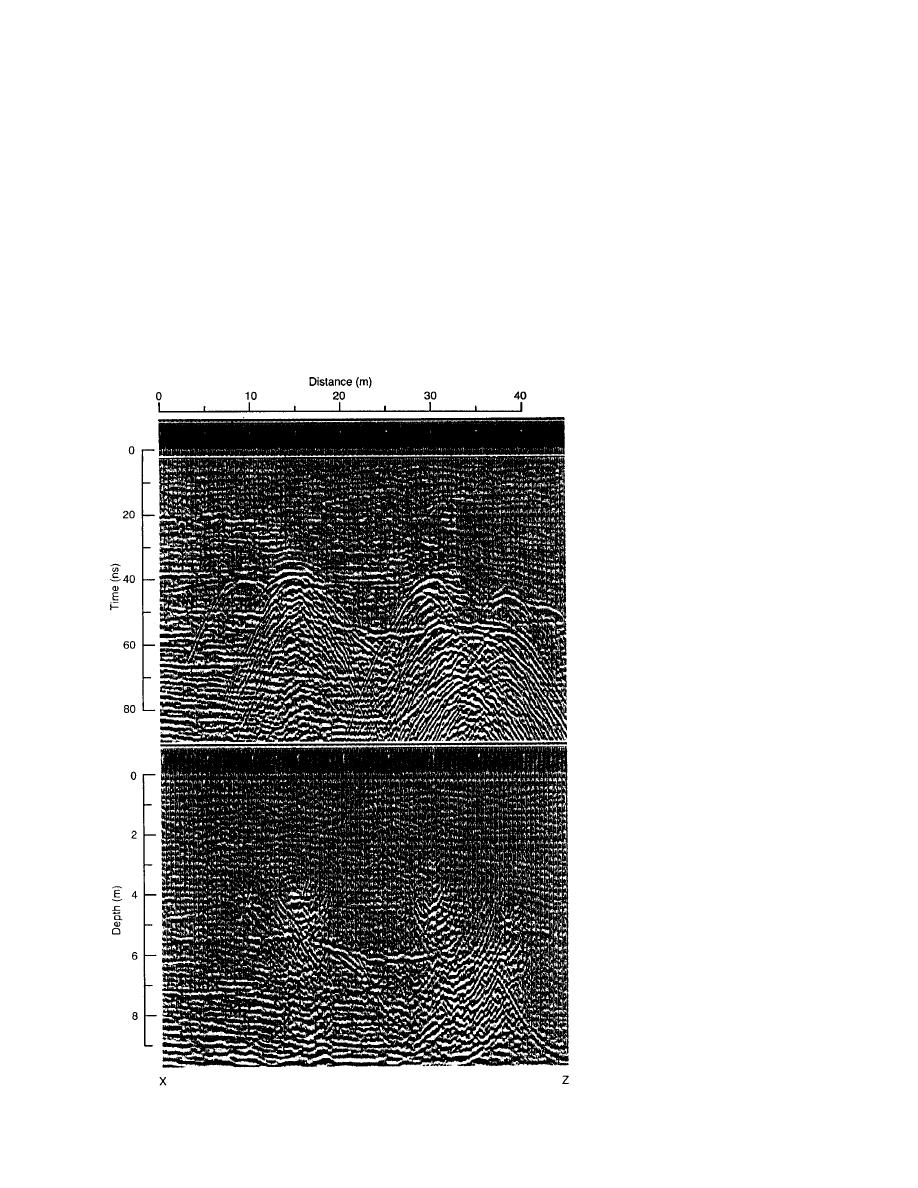
responding to an ε = 1.93, which corresponds to a
diagonal length = 9.8 m) and, 2) that there are
firn density of 0.5. The correctness of this value is
many more diffractions originating at 60 ns to-
revealed in the migration, which transforms the
wards point Z, suggest that there is more struc-
unmigrated data into several horizontal surfaces.
ture buried. The apexes of the prominent diffrac-
The unmigrated data of Figure 7 reveal a linear
tions are at about 40 ns and the migrated data re-
coherent reflection at about 55 ns delay, and
solve these diffractions into two apparent col-
many diffractions of which two, centered at 15
umns. The strong diffraction originating at about
and 29 m, are very prominent. The migrated data
15 m collapses to a horizontal surface (i.e., coher-
show the linear reflector to be between 17 and 28
ent reflection) about 2 m wide at 4 m depth. The
m. We presume that a major part of the linear re-
diffraction at 29 m distance also collapses to a co-
flection is the roof at a depth of about 5.5 m. The
herent reflection at about 4 m depth, but it is not
facts that 1) the 11-m distance is much greater
as linear. These diffractions could be responses to
than the original roof dimensions (6.4 7.3 m;
metal pipes placed to mark the location of the
Figure 7. 400-MHz profile (top) and
its migration along line XZ that
crosses the old clean air facility.
Many of the diffractions in the top pro-
file have collapsed into discrete events
in the migrated section. The linear re-
flector provides convincing evidence
that the building has been located.
8



 Previous Page
Previous Page
